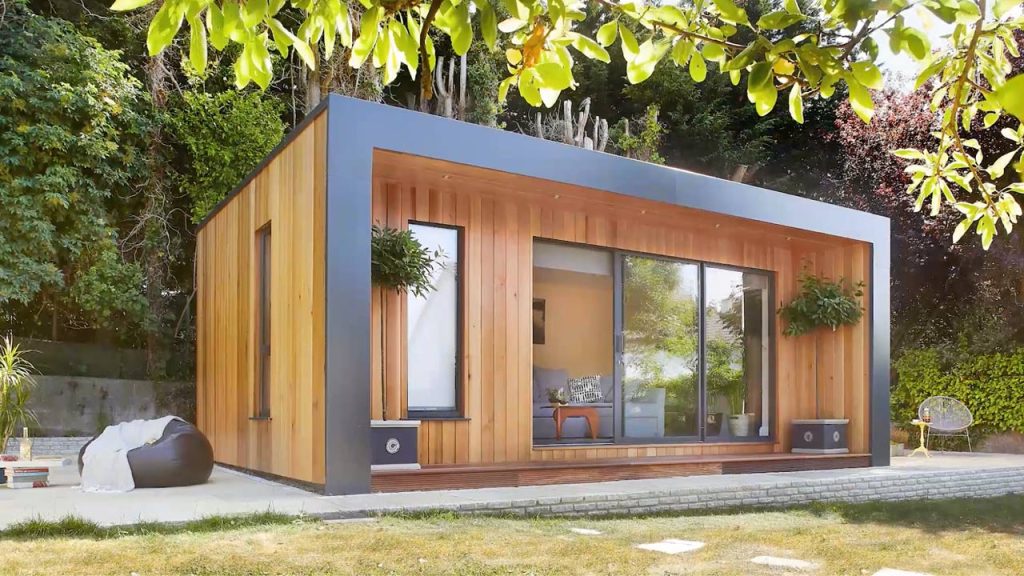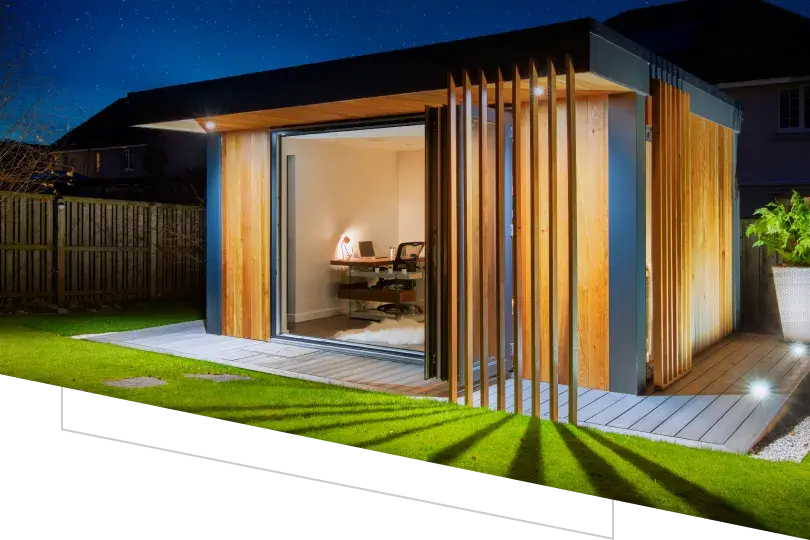Recommended Suggestions For Planning Permission On Garden Buildings
Recommended Suggestions For Planning Permission On Garden Buildings
Blog Article
What Size Restrictions Do You Have For Your Garden Rooms And Other Areas.?
Certain size limitations will typically determine whether planning permission is needed for extensions to garden rooms, extension and conservatories that are outhouses. Below are a few of the most commonly used criteria relating to size that may need you to seek permission to plan.
If the outbuilding is detached planning permission is usually required if the total area of the proposed structure as well as any other outbuildings that are already in place, exceeds 50 percent of the total area of the land around the house (excluding the footprint of the house itself).
Height Restrictions:
Constructions with one story: the maximum eaves should not exceed 2.5 meters and for roofs having a dual pitch, or any other kind of roof it shouldn't be more than 4 meters.
If a building is located within 2 meters of the property boundary the height must not exceed 2.5 meters.
Floor Area:
If you don't need planning permission, however your structure has a surface that is that is greater than 30 square meters the possibility is that it will be necessary to get approval from the building regulations.
Proximity to boundaries
If the structure is located within 2 meters of a border the planning permission is typically required if the height exceeds 2.5 meters.
Building Usage
The purpose for which you intend to use the room, while not necessarily a limitation on its size, could have an impact on the need for planning permission and whether it is needed. If, for example the structure is intended to be used to house residents or to run a small business, then planning permission could be needed.
Permitted Development Rights:
Permitted Development Rights, which permit certain kinds of work without the need for a full planning application, have limitations on the size and conditions. These rights differ based on whether the property is in a conservation zone or is subject to other restrictions.
Conservatories and extensions:
For a single-story rear extension the maximum depth for a single-story rear extension is usually 4 metres for detached houses and 3 meters for semi-detached and terraced houses. The Neighbour Consultation Scheme allows extensions of 8 or 6 meters, or respectively, if certain conditions are satisfied.
The height limit for an extension in the rear that is single story is 4 meters.
Side Extenders
Side extensions should not be any more than the original house and not more than 4 meters in height.
Volume Restrictions
In certain areas, such as conservation zones, or Areas of Outstanding Natural Beauty Any addition to the original building that is greater than 10% or increases the size by 50 cubic meter may need planning approval.
Front Extensions
Planning permission is often required for extensions that extend beyond the front facing the road that was the initial residence.
It is essential to consult with your local planning authority since the rules may differ depending on the local council or the property's condition. Building regulations approval might be required even when the planning permission is not required. This could be due to safety or structural reasons. Take a look at the best 5 by 5 meter room for more info including composite garden office, Tring garden rooms, out house for garden, outhouse building, ground screws vs concrete, costco garden office, garden rooms near me, out house for garden, costco outbuildings, my outhouse and more.
What Planning Permission Is Required For Gardens, Rooms, Etc. In Relation To The Height Limit?
When constructing gardens, conservatories outhouses, gardens offices, or extensions, limitations on height will determine if permits for planning are required. Here are the key factors to be aware of: General Height Limits:
The maximum height should not exceed 4 meters for an outbuilding, or an addition with a roof that is double pitched.
Other types of roofs (flat, one-pitched, etc.) have maximum heights that cannot exceed 3 meters. ), the maximum height must not exceed 3 meters.
Limits of proximity:
The maximum height of an structure that is within 2 meters of the property line cannot be over 2.5 meters. This is the case for garden rooms, sheds, and similar outbuildings.
The height of the eaves:
The maximum eaves-height (the height at the lowest point of a roof) for any structure must not exceed 2,5 meters.
Conservatories and Extensions
Extensions to the rear with a one-story extensions must not exceed 4 meters. This includes any parapets and the roof.
Side Extensions
Extensions to the sides of the house should not be taller than 4 meters, and not more than half of the original width.
Special Roofs:
Structures that have a flat-roof are generally restricted to a height limit that is not more than 3 metres.
Additional restrictions in designated areas:
In areas of Outstanding Natural Beauty conservation areas, as well as other designated zones, there may be stricter height restrictions and permits for construction that would typically fall under permitted development rights.
Constructions in National Parks
National Parks structures may also be subject to additional height restrictions which require approval for the planning process.
Design for the Roof
Consider the height of your roof without chimneys, antennas, etc. is to be considered. If the highest point goes over the limits for development, planning permission will need to be obtained.
The impact on neighbours:
Even if a structure is within the height limit the planning permit may be needed if the effect on neighboring properties' privacy or view is significant.
Maximum Height Overall:
The height limit of a building is four meters. For instance, a backyard with a dual-pitched rooftop is not allowed to be taller than 4 meters at its top.
Decking, Platforms or Platforms
To avoid the requirement of planning permission, any platforms or decks associated with the structure should not elevate the ground by more than 0.3 meters.
You should always check with the local planning authority to learn about any changes in regulations or specific rules. Even if the construction is within the permitted development rights (PDR), local variations or property conditions may require permission to plan. See the most popular garden pod office for site recommendations including garden office electrics, my outhouse, garden out house, what is a garden room, Tring garden rooms, 4m x 4m garden room, garden room conservatory, costco garden office, costco garden office, small garden office and more.
What Planning Permissions Do You Need For Your Garden, Rooms And Other Structures In Terms Of Agricultural Land?
There are certain restrictions and regulations to obtain planning permission for the construction of conservatories, outhouses, or garden offices on land that is agricultural. These are the most important points to consider The following: Change of Use
Agricultural land is generally reserved for agriculture and the like. Planning permission is usually required to alter the land's use from agricultural to garden or residential structures. This is because it requires an alteration in its agricultural purpose.
Permitted Development Rights:
Land for agriculture is typically subject to different development restrictions than residential land. For instance, certain types of agricultural structures can be built without full planning permission. However, these rights are typically for agriculture-related structures and not residential garden rooms or offices.
Size and Scale
The size of the proposed structure will determine whether planning permission is required. The larger buildings or those that cover a significant portion of the space are more likely require planning permission.
The impact on agricultural use
Planning permission is likely to be required in the event that the new structure causes problems with the usage of the land, for example, reducing the space that is available for cropping or livestock.
Green Belt Land:
Additional restrictions are also imposed on agricultural land that has been also classified as Green Belt to help prevent urban sprawl. Any new structure located on Green Belt land typically requires approval from the planning department and must meet the strict requirements.
Design and Appearance
The style and design of the building's design must match the rural character of this area. Planning permission is required to ensure that the proposed building won't negatively impact the landscape.
Environmental Impact:
It is important to consider the impact on the environment prior to construction on land that is agricultural. A planning permission may be required to conduct an environmental impact assessment in order to ensure the new structure doesn't harm local ecosystems or wildlife habitats.
Closeness to existing buildings:
Planning requirements can be affected due to the proximity of a proposed garden office or space close to an existing building for agriculture. Structures close to farm buildings are seen differently from structures that are located in open areas.
Access and Infrastructure
The impacts on access and infrastructure, like roads, water supply, and waste management, needs to be taken into consideration. Planning permission will determine whether or not current infrastructure is able to support the new construction.
Use Class Order
The law of planning defines the classes used that are applicable to agricultural land. In order to ensure that the proposed use is compliant with local policies on planning and regulations, it's usually required to seek planning approval prior to modifying the class.
Local Planning Policies
Local planning authorities are governed by specific policies regarding agricultural land. Planning permission will be granted to non-agricultural structures in accordance with these policies, which take into account local development plans as well as community needs.
National Planning Policy Framework
In the UK the National Planning Policy Framework gives guidelines on how best to use and develop land. Planning permission for agricultural structures will be assessed in light of NPPF which focuses on sustainable development and the protection of rural areas.
Planning approval is required for conservatories, extensions and outhouses as well as garden offices on land that is agricultural. This is due to the fact that the land has to be altered to meet local and national plans. It is essential to speak with the local authority to understand the specific requirements. View the top rated outhouse buildings for site advice including composite garden rooms, garden room planning permission, best heater for log cabin, what size garden room without planning permission, best heater for log cabin, insulated garden buildings, do i need planning permission for a garden room with toilet, insulated garden rooms, best heater for log cabin, composite garden office and more.